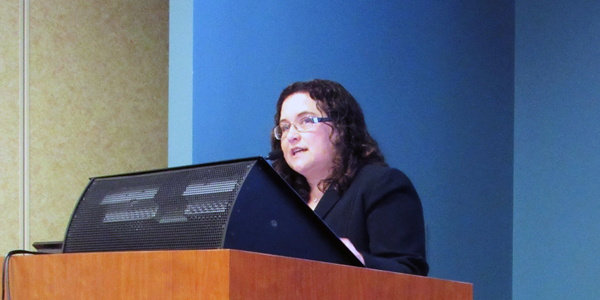By Amanda Durish Cook
CARMEL, Ind. — MISO’s effort to simplify treatment of behind-the-meter generation has created more questions than it has answered, stakeholders said last week at an educational meeting that turned into a contentious debate.
The RTO plans to split BTM resources into two categories for the purposes of market operations. The first would consist of “uppercase” generation described in the Tariff and dispatched in the market, usually as a load-modifying resource.
A second “lowercase” category would represent BTM resources not registered with or dispatchable by the RTO and not subject to market mitigation.
But some stakeholders expressed confusion over how the two definitions would address capacity deliverability or calculate network load for transmission billing.
The Jan. 26 debate is prompting MISO to re-examine its Tariff language and Business Practices Manuals with a promise for a more thorough discussion with stakeholders.
‘More Conversation’ Needed
“We’ve had some areas where more conversation needs to happen,” said Kim Sperry, MISO director of market engineering.
Stakeholders from multiple sectors said MISO does not have clear enough rules in place to require BTM generation to supply gross network load data before transmission rates are determined.
MISO staff said a legal precedent to provide gross load for transmission service for BTM generation was created 18 years ago in FERC Order 888, when the commission wrote that it “plainly require[d] inclusion in the rate denominator of ‘behind-the-meter’ loads” and said “load served by ‘behind-the-meter’ generation should be included in the load ratio share calculation for determining the transmission cost allocated to network customers.”
However, stakeholders wondered if that load calculation would apply to MISO’s lowercase BTM generation definition.
Sperry said she expected network load reporting to represent transmission losses for all BTM generation.
WEC Energy Group’s Chris Plante pointed out that there’s nothing in the Tariff that requires BTM asset owners to create gross loads to help determine transmission rates. Sperry said MISO would work with its attorneys to possibly create clearer Tariff language.
Stakeholders also said similar generators would be treated differently in terms of capacity deliverability, depending on their uppercase or lowercase status. In a previous meeting, stakeholders asked how BTM generation could be counted as deliverable capacity and how it can deliver when it exceeds local load. (See MISO Ponders Changes to Behind-the-Meter Generation Rules.)
MISO said that, as with other resources, market participants could either obtain firm transmission service from the BTM generator to the load or the generator could acquire network resource interconnection service (NRIS) through the interconnection queue and serve load to a network customer.
Those deliverability requirements amounted to a rule change three months ahead of the Planning Resource Auction, stakeholders said, contending that excess BTM generation has historically been sold into the market as capacity without requiring NRIS or firm transmission.
Not New Rules?
MISO staff maintained that the requirements were a “clarification” of what already exists in the Tariff.
“These are not new rules; these have existed in the Tariff,” said Neil Shah, system support resource planning manager. “These resources need to go through the same process as other resources.”
“As of now, that’s your opinion,” replied David Sapper of Customized Energy Solutions. “You’d better not try to enforce this without FERC approval. That’s my admonition.”
DeWayne Todd of Alcoa said MISO’s clarification could upend decades of practice in which BTM generators have delivered excess load for reliability purposes. Stakeholders asked how many megawatts of BTM generation would now be considered undeliverable.
“We need to go back and fill in the gaps on some definitions. That’s what I’m hearing,” Sperry said.
WPPI’s Steve Leovy said MISO should create a more detailed uppercase BTM generation definition, while others said the lowercase definition is too vague to fulfill transmission use pricing or capacity procedures.
Todd said the BTM deliverability requirement is infeasible because lowercase BTM generation would be ineligible for firm or point-to-point transmission service; those resources would not be captured in MISO’s Open Access Same Time Information System (OASIS), which provides data on available transmission capability.
“Why wouldn’t people just take all of their generation behind the meter and forego operating procedure?” American Electric Power’s Kent Feliks asked, referring to non-dispatchable BTM generation.
That was a question for MISO’s Resource Adequacy Subcommittee, the RTO’s Manager of Resource Adequacy John Harmon said.
“There are operation questions,” We Energies’ Tony Jankowski said. “Who gets to deploy that [BTM] resource? … We end up with a laundry list of questions and maybe stakeholders [should] work on these topics in other forums and come back.”



